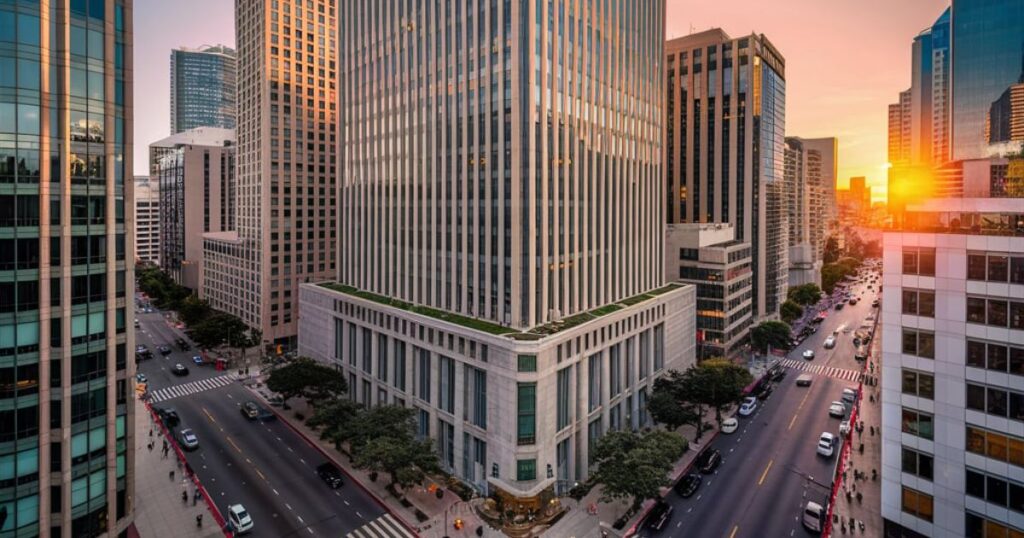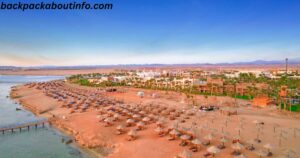San Diego boasts sun-drenched beaches and a laidback vibe, luring millions of visitors yearly. However, even in America’s Finest City, certain pockets stand out as crime hotspots requiring extra vigilance.
Drawing from personal experiences and official data, this insider’s guide unveils the 4 most dangerous areas to avoid or navigate very cautiously.
Defining “dangerous” neighborhoods considers violent crimes threatening personal safety like assault and robbery, as well as property crimes like burglary. But perceived danger also factors in variables cultivating an unmistakable “sketchy” vibe like gang activity or poor lighting breeding unease.
This ranking weighs both hard data and the subjective “uh-oh” feeling locals know too well, cutting through sunny filters to expose real risks.
East Village – Where Nightlife Meets Street Crime
East Village tops the list as statistically the most dangerous neighborhood in San Diego. Its eclectic murals, buzzing restaurants, and hip bars create an artistic, energetic atmosphere. However, this area directly neighboring the famous Gaslamp Quarter has a darker side that overshadows its cultural renaissance.
In 2022, East Village saw:
- 282 aggravated assaults
- 424 violent crimes
- 47 armed robberies
- 43 rapes
Those staggering numbers make it San Diego’s #1 hotspot for violent offenses. As one local illustrated: “I avoid East Village like the plague after 10 pm. Last year, my buddy got jumped by some gang members just for stopping at the wrong intersection.”
Despite a thriving daytime scene, the area takes on an edgy, unpredictable feel after dark when shady characters emerge from the shadows. The very architecture sets the stage, with cramped alleyways and industrial buildings harboring pockets ripe for criminal activity.
One night I inadvertently found myself on a poorly lit side street after a concert at the Brick Bowl, immediately regretting my parking choice as some menacing figures appeared to follow me for several blocks before I found safety.
Revitalization efforts are underway, but extreme caution is advised, especially at night in East Village. Street smarts like sticking to main thoroughfares and avoiding any confrontations are wise when navigating downtown’s most dangerous zone.
Core-Columbia – Downtown Risks in San Diego’s Business Hub

In the heart of downtown lies Core-Columbia, sandwiched between the lively Gaslamp District and Little Italy. High-rises, commerce, and heavy foot traffic define this densely urban neighborhood. Unfortunately, that same frenetic energy enables 221 violent crimes in 2022 – the 2nd highest rate in San Diego.
Core-Columbia Crime Stats:
| Stat | Number |
| Aggravated Assaults | 154 |
| Violent Crimes | 221 |
| Armed Robberies | 24 |
| Rapes | 13 |
As one office worker stated: “Hoards of people cycle through daily, you have to keep your head on a swivel around some street corners to avoid getting caught up in the wrong crowd.” The area has an overall “very unsafe” rating.
What makes Core-Columbia so dicey? A large part stems from being situated between two of San Diego’s biggest nightlife destinations – Gaslamp and Little Italy. As the bar crowds spill out after last call, they bring all the drunken debauchery, fights, and criminal opportunism that entails right into the heart of Core-Columbia’s business district.
I’ve personally witnessed more than a few scuffles and homeless harassment situations while cutting through the neighborhood during evening hours. The sheer number of people and lack of lighting in certain areas create an x-factor where staying completely alert is crucial.
Whether visiting for business or tourism, remaining extremely vigilant in Core-Columbia is a must, as downtown San Diego concentrates much of the city’s criminal activity within its narrow urban canyons.
Read more Post: Cost of Living Comparison: California vs. Texas
San Ysidro – Border Town Troubles Along the Mexico Line
Although it technically falls within San Diego’s city limits, San Ysidro has a unique set of challenges stemming from its bordertownnature. Straddling the U.S./Mexico border, this diverse community acts as a crossroads blending cultures – but also cross-border crimes like drug trafficking and gang activity.
“The barrio vibes give San Ysidro charm, but the lack of strong policing near the border fostersall kinds of sketchy situations.” – Long-time resident
San Ysidro racked up 151 violent crimes and 24 armed robberies in 2022 – numbers exceeding many inland San Diego neighborhoods. Its proximity to Mexico creates crime dynamics unlike other parts of the city.
One particularly harrowing incident occurred when my friend’s car broke down late at night just blocks from the border crossing. What should have been a simple roadside repair turned into a terrifying situation as several sinister-looking individuals quickly converged, seemingly attempting to prey on their vulnerable state before neighbors thankfully scared them off.
While the specific stats don’t top the charts, San Ysidro has an unmistakable “very unsafe” feel requiring extreme situational awareness. Factors like underground crime syndicates, loitering gang activity, and lower police presence near the border create a palpable tension that hovers over daily life.
Mission Valley East – A Retail Danger Zone After Dark
Mission Valley East seems harmless enough by day, a shopper’s paradise home to multiple malls and the region’s iconic IKEA. But after closing time, this commercial hub becomes an opportunistic crime zone rife with risks.
High-Value Targets Attract High Crimes:
- 179 violent crimes in 2022
- 41 armed robberies
- 79 aggravated assaults
- 12 rapes
“I got my car window smashed in the Target lot over on Frazee,” one resident recalled. “Thieves stake out places like that hoping someone leaves a laptop or purse in sight.”
Lonely parking lots, lack of foot traffic, and ample escape routes via highways make Mission Valley East very unsafe at night. Heightened security measures get outmatched by brazen criminal elements.
Just last holiday season, an elderly family friend was loading shopping bags into his car at Mission Valley mall when he was violently accosted by robbers who stole his belongings and severely injured him.
Stories like these underscore how shopping centers transform from family-friendly to potential danger zones once the sun goes down.
While certain parking structures get decent lighting and guard patrols, many big box retailer lots are frighteningly dark and isolated, fertile ground for car break-ins and worse. Wandering these “concrete jungles” alone at night is a surefire way to make yourself an easy target.
Honorable Mentions – Other Areas to Exercise Caution

While not making the top 4 cut, several other neighborhoods should give San Diegans and tourists pause:
- Pacific Beach (Nicknamed “PB”): Popular nightlife/bar scene leads to drunken crime, especially around closing time
- Hillcrest: LGBTQ+-friendly area with higher rates likely due to homeless/transient population
- North Park: Trendy bars/breweries attract criminal activities after hours
These trending spots aren’t necessarily bad areas overall. However, being alert and avoiding dark/isolated zones at night is wise when hitting the social scenes.
I’ve personally had too many “wrong place, wrong time” brushes with rowdy drunks or mentally unstable homeless individuals in PB and Hillcrest to ever let my guard down fully in those neighborhoods after dark. And North Park’s bar-hopping vibe can turn ugly quickly if you stumble into disputed “territory” controlled by local gangs.
The common thread tying these pockets of risk together? Locations combining nightlife crowds with economic disparities create a combustible dynamic where criminals can prey on inebriated or unaware victims.
Savvy San Diego Safety Tips from a Local
No neighborhood is immune from crime, even in a sunny paradise like San Diego. To avoid being a victim, follow these street smarts:
Stay Vigilant:
- Don’t walk around distracted, fumbling with electronics
- Keep your head on a swivel, avoiding isolated areas
- Park in well-lit, high-visibility zones
- Don’t flash cash, jewelry, or other pricey items
Travel Wisely:
- Avoid unnecessarily risky areas, especially at night
- Stick to main streets and populated areas when possible
- Use ride shares over public transit in sketchier locales
- Don’t travel alone if avoidable
Be Proactive:
- Report suspicious activity to authorities promptly
- Stay sober and aware of your surroundings
- Avoid stopping in rough neighborhoods, even briefly
- Have a backup plan for transportation/exits
With street smarts and advance planning, most crime can be avoided so you can experience San Diego’s incredible offerings safely.
Beyond those basic precautions, it also pays to make a habit of regularly checking updated crime maps and guidance from sources like:
- San Diego Crime Mapping and Analytics
- San Diego Police Department Crime Reports
- Neighborhood watch groups and community forums
Crime patterns and hotspots can shift over time, so staying plugged into the latest local intel is key for steering clear of trouble zones.
Another smart tactic is dialing in your situational awareness by learning to spot potential threats. While impossible to validate every passerby’s intentions, there are subtle cues that can raise red flags – like people lingering aimlessly, cars circling the same area repeatedly, or groups showcasing known gang signs/colors.
Paying attention to your gut instincts also goes a long way. If something simply feels “off” about a neighborhood vibe or scenario, that’s your primal sense kicking in to avoid potential danger. Don’t ignore it.
Case Study: The Unassuming Threat in La Jolla
To illustrate how upscale neighborhoods aren’t impervious to crime, let’s examine the wealthy enclave of La Jolla. With its Million-dollar mansions, posh shops, and stunning seaside scenery, most would never lump it among San Diego’s riskier zones.
However, a spate of brazen “hot prowl” burglaries and violent home invasions over recent years has transformed La Jolla’s perception of safety on a dime.
In one terrifying case from 2021, a family was held at gunpoint in their own residence by masked intruders who made off with cash and valuables. Events like these were essentially unheard of in the “Jewel City” before now.
While property crimes tend to be the bigger issue among San Diego’s most affluent areas, they can easily turn violent when criminals get confronted in the act or homeowners fight back to protect belongings.
The main lesson? No matter how fancy the zip code, staying on guard is prudent anywhere in San Diego. Complacency breeds opportunity for the criminal underworld.
H3: Differing Perspectives – Resident vs Visitor
It’s important to recognize that long-term residents and temporary visitors/tourists may have contrasting views on what constitutes San Diego’s “dangerous” neighborhoods.
For Locals, there are typically unwritten rules about steering clear of certain blocks, alleys, or housing projects where gang activity, homeless encampments, or criminal elements are known to operate. Cutting through these “no-go” zones is a obvious no-no after experiencing them first-hand over years of street wisdom.
However, tourists unfamiliar with the area could unwittingly wander into these trouble spots, unaware of the risks. From an outsider’s perspective, telling the benign urban environment from a hotbed takes keen skills many don’t develop without immersion.
Case in point: I’ve had several friends visit from out-of-town eager to explore San Diego’s edgier, “authentic” side. Their definition of edgy versus mine as a local were vastly different, often requiring redirection to safer areas before uncomfortable situations arose.
The inverse scenario also exists where certain neighborhoods get an undeservedly harsh reputation that makes locals shrug but deters tourists.
Take Logan Heights as an example – statistically not even making this list’s top cut for violent crimes. But persisting stereotypes of the area as gang-infested give many visitors pause before ever stepping foot there, despite its rich Hispanic heritage and forward-thinking culture that’s quickly gentrifying.
Both residents and visitors should keep this “perception gap” in mind when evaluating safety. Locals must resist dismissing danger based on familiarity blindness, while tourists need to verify neighborhood realities rather than making assumptions.
Conclusion: Navigating the Danger Zones
San Diego has rightfully earned its reputation as a world-class city boasting perfect weather, picturesque coastlines, and a vibrant cultural scene. However, as with any major metro area, it has its fair share of dangers lurking in certain neighborhoods.
While the areas highlighted like East Village, Downtown’s Core-Columbia district, the border zone San Ysidro, and the retail jungle Mission Valley East require heightened precautions, most of America’s Finest City remains very safe overall if using common sense.
Whether a local or visitor, a few simple principles – avoiding isolated areas, staying alert, ditching valuables, and leveraging transportation smartly after dark – can go a long way in sidestepping San Diego’s seedier pockets while letting you fully experience its many sun-drenched riches and attractions.
At the end of the day, no amount of tips can account for random chance. Even the safest neighborhoods can occasionally experience crimes of opportunity if circumstances allow criminals to strike at the right (or wrong) time and place.
The best any of us can do is stay vigilant, make smart choices to minimize risks, and enjoy all the incredible sights and scenes San Diego has to offer without living in fear. By keeping a balanced perspective and your wits about you, every part of America’s Finest City can be appreciated to its fullest in safety.











